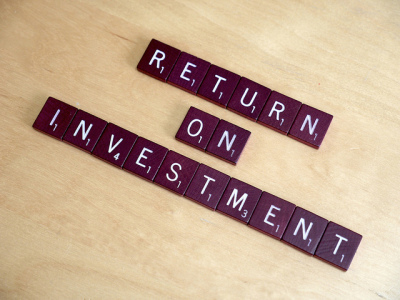
Manufactured Spend Return On Investment
There have been a couple of interesting posts this week regarding manufactured spending and a value return for time. Free-quent Flyer briefly mentioned that time spent isn’t as important to him as money invested. In other words, he would rather maximize the dollars spent than the time invested.
He writes, “I don’t place a high value on my time, or rather, I don’t treat manufactured spend as a time “suck”. (His post is mostly about using Amex gift cards for manufactured spend and I highly recommend reading it.)
Today Chuck at Doctor of Credit weighed in with his own opinion. He takes the opposite viewpoint in that time should be calculated, because time spent MSing is “dead time”. Since I have my own opinion on this topic, I thought I would weigh in.
Good & Bad Ways to MS
People write to me quite often complaining about the lack of ways to manufacture spend after the death of things like Vanilla Reloads and Amazon Payments. For many, it simply is too hard or seemingly there isn’t a lot of opportunity.
While they tend to see it as an overall lack of opportunities, the truth is it is a lack of “easy” manufactured spend activities. Most people have jobs and families and not enough time in the day to chase every last obscure method of manufacturing spend. Oh and then there is that whole spending way too much time in Walmart thing.
Narrowing It Down
The first key factor in maximizing your return on time is to narrow down the best opportunities. I don’t calculate the time spent learning how to MS, because this is a hobby after all. We spend a lot of time reading blogs and forums and that is just the way it is. You could certainly factor that into your time spent calculations, but I fear the result would be a bit depressing.
For most people, manufacturing spend requires discipline and persistence. Just like with anything, it gets easier and you become more proficient as time goes on. So figure out what works based on your geography, needs and what opportunities are available and do it! Sometimes trial and error is necessary.
Calculating Return on Investment

I prefer to calculate return on investment in the form of an hourly rate. This seems to work out best for me. To calculate an hourly rate I simply take the time spent in every step of manufacturing spend. One of the key arguments for the REDbird card is that it simplifies this completely. Drive to Target, load card, go home. Simple.
But that isn’t an option for everyone, so they turn to other methods like Simon gift cards or cards purchased at grocery stores. Let’s take a look at what a typical return on investment would be for those two options when loading them to Bluebird/Serve.
Simon Mall
I can purchase $10,000 in Simon Mall gift cards for $3.95 per $500. The entire purchase takes about 40 minutes to complete including drive time. Each trip to Walmart involves 20 minutes of driving and each card takes approximately 2 minutes to load in my experience.
Between my wife and I, we can load $10,000 per month to our Serve cards with a maximum of $5,000 per day. This means that I must make two trips to Walmart to liquidate the Simon cards. I can now calculate my hourly rate of return:
- 2 trips to Walmart: 40 minutes of driving
- Liquidating 20 cards: 40 minutes
- Time spent at Simon Mall: 40 minutes
- Total Time Spent: 120 minutes
If I used an Arrival Plus card to purchase the Simon gift cards, I earn 2.2% cash back or $221.73. Since I pay fees of $79, my net “profit” is: $142.43 or $71.36 per hour. Not terrible, but not really amazing either. (Of course other factors can change this like the recent 3x everywhere retention bonus on the ThankYou Preferred.)
Grocery Store with 5% Card
My wife and I have a few cards that pay 5% back at grocery stores. Unfortunately Visa/MC gift cards at those stores cost $5.95 each and there is a limit of $2,000 at a time. So purchasing $10,000 worth generates $505.95 in cashback for a cost of $119. Lets look at the time spent:
- 5 trips to the grocery store: 75 minutes including driving
- Two trips to Walmart: 40 minutes of driving
- Liquidating 20 cards: 40 minutes
- Total Time Spent: 155 minutes
So I can earn a $386.95 profit for 155 minutes worth of “work”. That equates to $149.79 per hour. So I spent more time with the grocery store option, but it paid over double per hour spent.
So What Should That Number Be

I always aim to get about $100 per hour back when manufacturing spend. Sometimes things go wrong and I don’t achieve that, but I won’t normally go out of my way for less, because as I showed above, it can be achieved.
With that said, I do still employ the Simon Mall method from time to time. Why? Well for two reasons. The first is for minimum spend requirements. When spending towards a credit card bonus, I can then factor that in towards my return. Also, it is convenient to pickup so much spend in one place at one time.
Also, if I have a specific need for miles and need a lot of spend to get them, then Simon can be a good option. In that case, my want of those miles supersedes my need to earn $100 per hour back.
Other Considerations
There are other things to consider when making these calculations as well. For example, I try to pickup gift cards when I am doing my grocery shopping or I stop by the store when I am passing by. If I am at Walmart I pickup other items I may need, which more effectively uses my time. I don’t factor those things in, but they help. On the flip side, gasoline is a factor, although my stores are very close, so I choose to forego that calculation.
Finally, there is an opportunity cost to manufacturing spend. If you weren’t doing this, you could be doing something else. That of course gets way too complicated and really is a different consideration for everyone, but it is something that should be considered.
Conclusion
Like Chuck, I do believe that everyone should be calculating their return on time invested when it comes to manufacturing spend. I prefer to calculate it as an hourly rate, because that is the easiest way for me to compare returns across methods.
Free-quent Flyer isn’t wrong either. He has a blog and thus this thing is part of his job. “Wasting” time manufacturing spend generates revenue in additional ways and he is thus an outlier. Either way, making calculations like this are important to ensure you are maximizing your time. I suspect the best solution for most people at this time would be to get a REDbird.
How do you calculate your return on time spent manufacturing spend? Which methods give you the greatest return? Let me know in the comments!



The money is 100% tax free, my day job pays $300.00 an hour, but the government takes $150.00, the first few months of the year,
Cash and miles are kind of fun…
[…] subject. Miles To Memories summarized a couple of posts, and added his own point of view, here: Manufactured Spend Return On Investment – Do You Account for your Time? It’s worth a […]
[…] Manufactured Spend Return On Investment by Miles to Memories. I’d also recommend reading the original Freequent Flyer post that started this discussion and then our own Chuck Sithe’s thoughts here. […]
Time is probably the most precious commodity that there is, especially when shared with friends and family. I would hope everyone values their free time at at least $100/hour if not well more.
You can easily spend just 15 minutes per day on all things related to miles and points. This is over 91 hours per year. So if you are going to get into this game you are effectively starting at ***negative $10,000*** each year. I doubt many people break even with what they earn.
Yeah I tend to agree. That is why much of this has to be considered a hobby and not a “business”. People do waste time on much less lucrative hobbies after all!
It makes little sense to monetize time unless that time could be otherwise traded for cash. If my spouse and I each valued our time at a constant $100/hr, we would never go to work, since we don’t make anywhere close to $4,800 a day. But not going to work wouldn’t leave more money in our pockets!
The monetary value of my time varies with the ACTUAL marginal income available to me. If I MS during a time when I could choose to be earning $100/hr elsewhere, it makes sense to compare the value of MSing at that rate. But I generally don’t have that choice, and I am NOT going to use an imaginary hourly rate to evaluate whether I should miss my child’s birthday party in order to MS!
Of course you need to place a dollar value on your time. You could wander around the streets every evening picking up change on the ground and make, say $2/hour. How do you determine if it’s worth it? You place a dollar value on your time (yes, it might not be a fixed value depending on various factors)
People are hesitant to do set a value on their time with miles/points because you quickly realize how much it’s costing you.
You say “It makes little sense to monetize time unless that time could be otherwise traded for cash”
1. That’s not true – you can do this thing called “enjoy life” which uses up time but doesn’t necessarily require cash
2. The irony amount your statement is that bloggers are always proclaiming that they got an $800 hotel room for free, but as you state that $800 is illiquid and can’t be traded for cash. So should it be valued at zero?
15 minutes a day on the train researching this stuff doesn’t bother me at all when I see everyone around me playing Candy Crush or whatever…
I haven’t started MS yet, but probably will whenever I can get my hand on a Redbird…
Most of my family is on the opposite coast, so all the time is an investment IN family time, not in lieu of it, since I’ll use the miles to get my wife, kids, and I across country.
Sounds like a great plan! Let me know if you ever have any questions.
Thanks for the shout out.
One thing I’m jealous of you is you’re in-Walmart time calculations of 40 cards in 20 minutes. I guess it varies by location, but I find it taking much longer for me.
Thanks Chuck! It is 20 cards in 40 minutes, although the opposite would be nice!